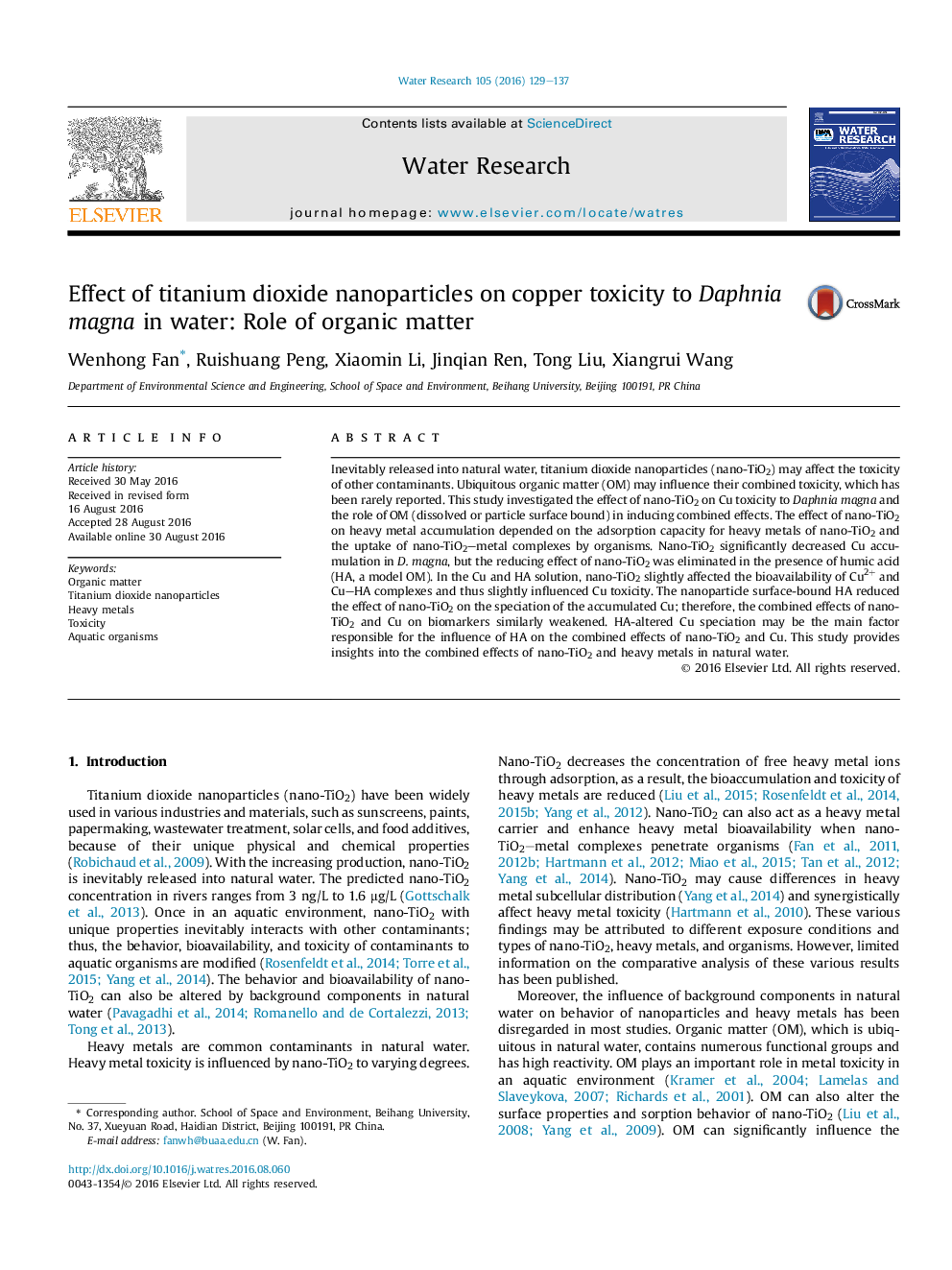| Article ID | Journal | Published Year | Pages | File Type |
|---|---|---|---|---|
| 6364560 | Water Research | 2016 | 9 Pages |
â¢The role of HA in combined effects of n-TiO2 and Cu on D. magna was investigated.â¢Cu accumulation in D. magna depended on Cu adsorption on n-TiO2 and TiO2-Cu uptake.â¢Dissolved HA weakened the reducing effect of n-TiO2 on Cu bioavailability.â¢Surface-bound HA weakened effect of n-TiO2 on the speciation of accumulated Cu.
Inevitably released into natural water, titanium dioxide nanoparticles (nano-TiO2) may affect the toxicity of other contaminants. Ubiquitous organic matter (OM) may influence their combined toxicity, which has been rarely reported. This study investigated the effect of nano-TiO2 on Cu toxicity to Daphnia magna and the role of OM (dissolved or particle surface bound) in inducing combined effects. The effect of nano-TiO2 on heavy metal accumulation depended on the adsorption capacity for heavy metals of nano-TiO2 and the uptake of nano-TiO2-metal complexes by organisms. Nano-TiO2 significantly decreased Cu accumulation in D. magna, but the reducing effect of nano-TiO2 was eliminated in the presence of humic acid (HA, a model OM). In the Cu and HA solution, nano-TiO2 slightly affected the bioavailability of Cu2+ and Cu-HA complexes and thus slightly influenced Cu toxicity. The nanoparticle surface-bound HA reduced the effect of nano-TiO2 on the speciation of the accumulated Cu; therefore, the combined effects of nano-TiO2 and Cu on biomarkers similarly weakened. HA-altered Cu speciation may be the main factor responsible for the influence of HA on the combined effects of nano-TiO2 and Cu. This study provides insights into the combined effects of nano-TiO2 and heavy metals in natural water.
Graphical abstractDownload high-res image (210KB)Download full-size image
